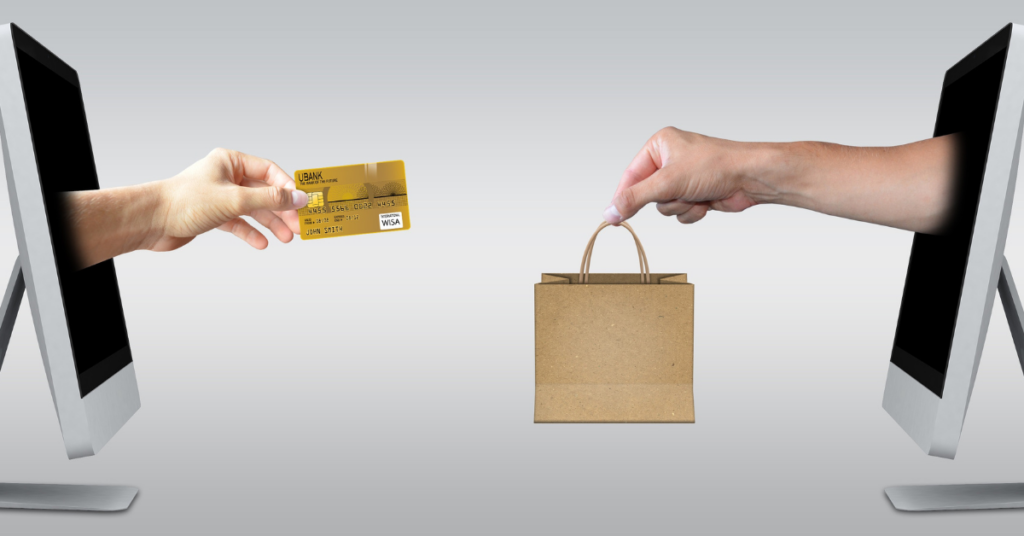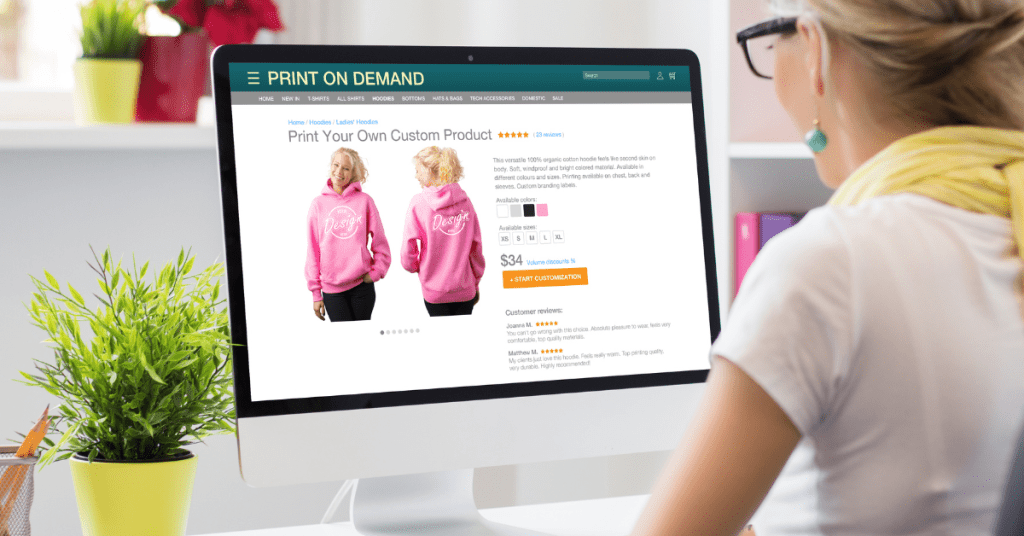If you have an idea to start your business selling clothes, continue reading. Etsy, one of the biggest marketplaces with over 95.1 million active buyers, is a good place to start. To sell clothes on Etsy, it’s a simple process to get started.
If you have a limited budget or just want to try it out, you can leverage the print-on-demand or dropshipping model. Otherwise, you may also consider getting your own design and inventory.
Either way, we got you covered. This guide will explain in detail the different types of clothes you can sell on Etsy and also a step-by-step guide on how to start your first Etsy store selling clothes.
Selling clothes on Etsy isn’t just a hobby – it’s a real money-making opportunity waiting for you. Discover how to turn your fashion flair into a thriving online business on one of the world’s best sites for selling clothes.
What Kind of Clothes Can You Sell on Etsy?
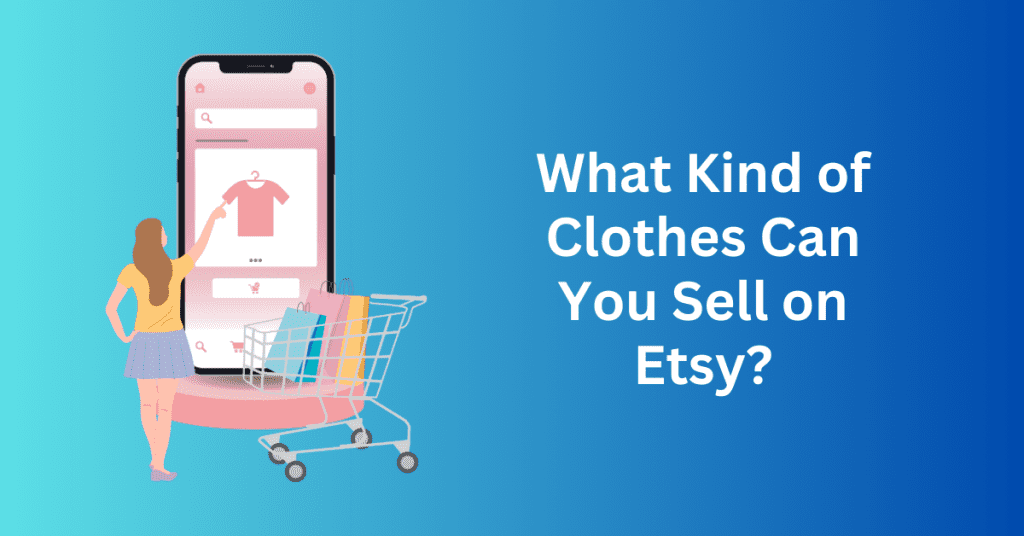
Whether you’re an aspiring fashion designer, vintage apparel, or possess a discerning eye for style, let’s explore different types of clothes that you can sell on Etsy.
Customized Clothes:
Within this category, the focus lies on tailored and personalized clothing. It provides the opportunity to present unique and individualized products customized to your customers’ preferences. While the terms “custom clothing” and “personalization” are often used interchangeably, custom clothing involves infusing creative elements into basic garments, adding a unique touch without manufacturing the clothes.
Personalization, on the other hand, invites customers to participate by incorporating their names, photos, special dates, or graphics, making the products uniquely theirs. Your creativity lies in customization, while personalization is an interactive process for customers. This segment is particularly enticing for Etsy shoppers, contributing to the popularity of the print-on-demand business model. This model involves taking clothing items from third-party suppliers, embellishing them with your designs, and selling them online for profit.
Vintage Clothes:
Etsy has specific guidelines for vintage items, requiring them to be at least 20 years old. Compliance involves providing details such as the item’s source, how its age was determined, the designer, and specific characteristics like fabric and labels.
Establishing trust with potential buyers necessitates thorough documentation and genuine information about your vintage pieces.
Brand-New Clothing:
This category is straightforward, encompassing newly manufactured apparel. Whether showcasing your own designs or sourced items, these are unworn clothes appealing to customers seeking the latest fashion trends.
Pre-Owned Clothing:
In this segment, you offer pre-owned clothes. This caters to customers looking for more economical options or those interested in sustainable fashion through garment reuse and recycling.
Handcrafted Apparel:
Etsy places a strong emphasis on the handmade section. If you’re a creator, it’s essential to physically craft the product. If you’re a designer, you may design items and have them produced by a production partner. Transparency about the production process, including details about individuals involved and production methods, is crucial to maintaining Etsy’s community values and trust.
Regardless of the category you choose to represent, a thorough understanding and adherence to Etsy’s policies are imperative. Your success on Etsy hinges on aligning with these guidelines while consistently delivering high-quality clothing.
Clothes You Can’t Sell on Etsy
When stocking your Etsy shop with fantastic discoveries, it’s crucial to be aware of the prohibited practices. Firstly, refrain from reselling mass-produced clothing in the handmade category. If you didn’t design or craft it yourself, it doesn’t belong in the handmade section. Etsy values authentic creation.
Additionally, exercise caution regarding intellectual property rights. Steer clear of garments featuring trademarked logos or designs for which you lack permission. Originality is paramount on Etsy.
Etsy actively monitors policy violations, and listings that do not comply may be taken down, posing a risk of account suspension along with outstanding fees. Adhering strictly to Etsy’s guidelines ensures a smooth and trouble-free experience.
How to Start and Sell Clothes on Etsy: The Complete Guide
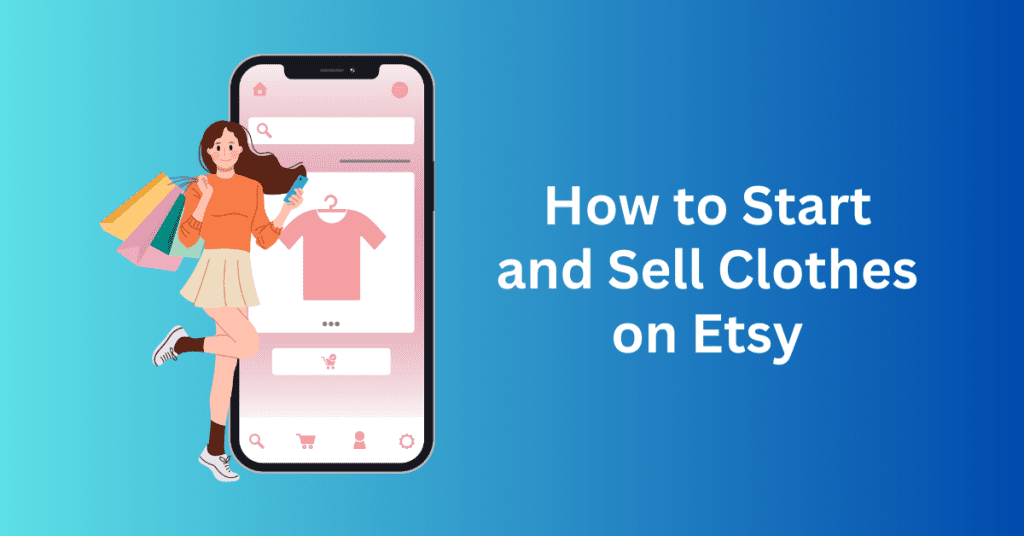
Selling clothes on Etsy is an exciting adventure, and getting your ducks in a row from the get-go is key to success. Let’s break down the essentials of how to start a clothing line on Etsy.
Find a Niche for Your Etsy Shop – Sell Clothes on Etsy
To find the perfect niche for your Etsy shop selling clothes, begin by looking into your own passions and areas of expertise. You may reflect on your personal style, fashion preferences, and any specialized knowledge you may possess. Consider the types of clothing that resonate with you, as this authenticity will naturally shine through in your shop.
Additionally, think about any unique skills or design elements that set you apart. This self-reflection is the foundation for a niche that not only aligns with your interests but also positions you as an authentic and knowledgeable seller.
On the other hand, market research is an important step in identifying a profitable niche. Utilize tools such as Google Trends, Semrush, or the Ubersuggest Chrome extension to spot emerging fashion trends and identify gaps in the market. In addition, you may explore successful Etsy shops in the clothing category, analyzing their products, customer reviews, and pricing strategies. Tools like Everbee and eRank can provide insights into keyword trends on Etsy, helping you understand what customers are actively searching for.
Besides, social media platforms like Instagram and Pinterest can also serve as valuable sources for identifying popular styles and gaining inspiration. By staying informed about the latest industry trends and consumer preferences, you can make informed decisions about the niche that aligns best with your vision.
Develop Your Online Store Branding – Sell Clothes on Etsy
The first step in developing your online store branding is to clearly define your brand identity. Firstly, start by identifying your target audience – understand their preferences, values, and aspirations. You need to define the unique aspects of your brand, including your mission, vision, and the story behind your clothing line.
Consider the style, tone, and personality you want your brand to portray. This involves creating a cohesive and memorable brand image that extends from your logo and colour scheme to the overall aesthetics of your online store. Tools like Canva or Adobe Spark can assist in creating professional and visually appealing branding materials, including logos and graphics.
Besides, consistency is key when it comes to online store branding. Ensure that your visual elements – such as your logo, typography, and colour palette – are consistent across all platforms, including your Etsy shop, social media accounts, and any other online presence.
A consistent visual language not only enhances brand recognition but also establishes a professional and trustworthy image. You may utilize tools like ColorPicker and Coolors to choose a harmonious colour scheme that aligns with your brand personality. Additionally, maintain uniformity in your product photography style to create a cohesive and polished look for your online store.
Decide What to Sell – Sell Clothes on Etsy
Deciding what to sell on your Etsy clothing store requires a thoughtful and strategic approach to ensure success in the competitive online marketplace. Firstly, it’s crucial to identify your target audience and niche. Understanding the preferences, interests, and needs of your potential customers will help you tailor your offerings to a specific market. Consider factors such as age group, style preferences, and even geographic location to narrow down your focus. For example, you might specialize in vintage-inspired clothing, sustainable fashion, or niche styles like bohemian or streetwear. This targeted approach not only helps you stand out but also attracts a dedicated customer base.
Secondly, conduct market research to analyze current trends and identify gaps in the market. Staying abreast of fashion trends allows you to incorporate popular styles into your designs. This can ensure that your products remain relevant and appealing to potential buyers. Additionally, consider conducting surveys or engaging with your audience on social media to gather feedback and understand their preferences better. This interaction can provide valuable insights into what potential customers are looking for in terms of design, colour, size, and price range.
Lastly, leverage your unique skills and passion to create a distinctive brand identity. Whether it’s handcrafted items, custom designs, or a specific theme, infusing your personality and creativity into your clothing store can set you apart from competitors.
Building a brand with a compelling story and aesthetic can create a more personal connection with customers, increasing the likelihood of repeat business and positive reviews. By combining market research, a targeted approach, and your creative flair, you can make informed decisions about what to sell on your Etsy clothing store and position yourself for success in the dynamic world of online fashion retail.
Choose How to Produce and Ship Your Products – Sell Clothes on Etsy
When venturing into the world of selling clothes on Etsy, a pivotal consideration is the approach you’ll take to bring your products to life and place them in the hands of eager customers. Explore various methods, each with its own associated costs, time commitments, and scalability.
Print On Demand
One option worth considering is Print on Demand (POD), an ideal starting point for Etsy sellers. With POD, you can design and sell custom clothing without the burden of managing inventory. It’s cost-effective, as there are no upfront expenses for stock, packaging, or shipping supplies. This model ensures that your clothes are printed and shipped only when a customer makes a purchase, making it an excellent choice for generating passive income.
Create Your Free Printify Account Now
Dropshipping
Another method to explore is Dropshipping, which allows you to act as a middleman without the complexities of maintaining a warehouse. With Dropshipping, products are shipped directly from the supplier to your customer’s doorstep. However, unlike POD, you don’t design the items. Instead, you select from a catalogue of pre-made products. This is a great option if you want to offer a diverse range of items without dealing with stock management, and it facilitates global reach without customization concerns.
Wholesale Purchasing
For those confident in their product’s demand, Wholesale Purchasing may be a viable option. Buying in bulk from wholesalers often leads to better per-unit pricing and potential savings on shipping costs, ultimately boosting profit margins.
Alternatively, partnering with local manufacturers for Local Manufacturing offers more control over the production process and supports local businesses. Although it requires a higher investment, it can pay off in terms of product quality and building a positive brand reputation.
In-House Production
Lastly, the In-House Production model provides the ultimate control over quality and design by producing items yourself or with a dedicated team. While it demands more resources and skill, it allows for complete customization and hands-on quality control throughout the production process.
Setting Up Your Account and Etsy Store – Sell Clothes on Etsy
Now, it’s time to start your Etsy store. This is the first step in building your online presence and starting your business. And this involves getting the technical aspects in place so that you can concentrate on the enjoyable part – crafting and selling your fantastic clothing!
Create Your Etsy Seller Account
To begin, create your Etsy Seller Account. It’s free to create one. This serves as your key to both selling and buying on Etsy. Simply sign up, upload a profile picture, and provide a bio to introduce yourself to the Etsy community. Initial setup is best done on a desktop browser, but once your shop is live, you can manage everything conveniently using the Etsy app.
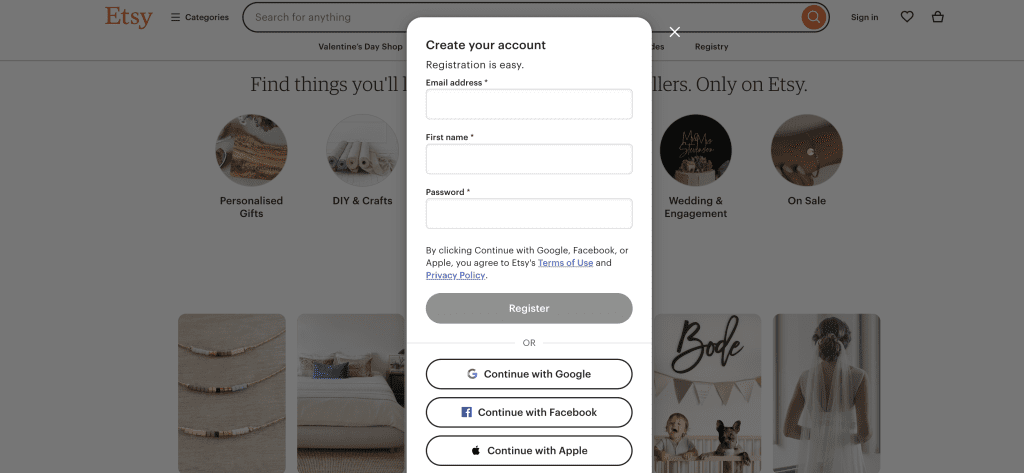
Setup Your Etsy Shop Preference
Now, let’s start to set up your Etsy store.
Firstly, visit Etsy.com/sell and click on “Get started.” Then, answer some fundamental questions about your location, business experience, and interest in additional selling resources. You need to choose your shop’s language, country, and currency, clicking “Save and continue” after each selection.
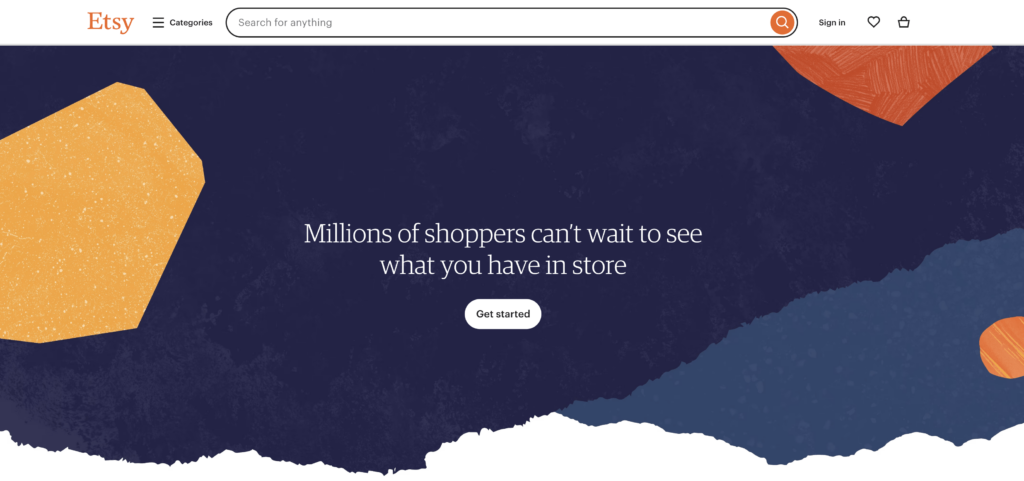
The next thrilling step is selecting your shop name. It should be memorable, reflect your style, and adhere to Etsy’s guidelines of 4-20 characters, no spaces or special characters, and it must be unique. If you’re struggling to decide on a name, you can use an AI Business Name Generator for assistance.
Select A Payment Method
Then, connect your bank account to your Etsy shop to facilitate transactions. The setup process varies based on your location, so follow Etsy’s guidelines specific to your country. When it comes to Etsy payments, add a debit or credit card to handle Etsy’s charges. For details on listing fees, refer to our article, “Etsy Fees Explained.”
Create Your First Listing And Activate Your Store
To activate your store, create your first listing. Consider this as the grand opening of your online boutique. While you don’t need to list all your products at once, this initial listing is what signals the “Open” sign on your Etsy store.
List, Price, and Optimize Your Clothing Items – Sell Clothes on Etsy
Now that you have launched your Etsy store, it’s time to start optimizing your Etsy store and listings to get more sales. A well-crafted product listing will showcase your products and make them discoverable through Etsy search to start making money online.

From most successful Etsy stores that we saw, Etsy search organic traffic is still the biggest traffic source to bring in the most sales. Let’s see some Etsy SEO optimization you can have for your Etsy store.
1. Product Titles
Consider your product title as the initial handshake for your item. It should create a strong and positive first impression. The key is to be both clear and descriptive, incorporating keywords related to your products. You can utilize keyword research tools or suggestions from Etsy’s search bar to understand what your audience typically searches for when looking for the ideal t-shirt or vintage item.
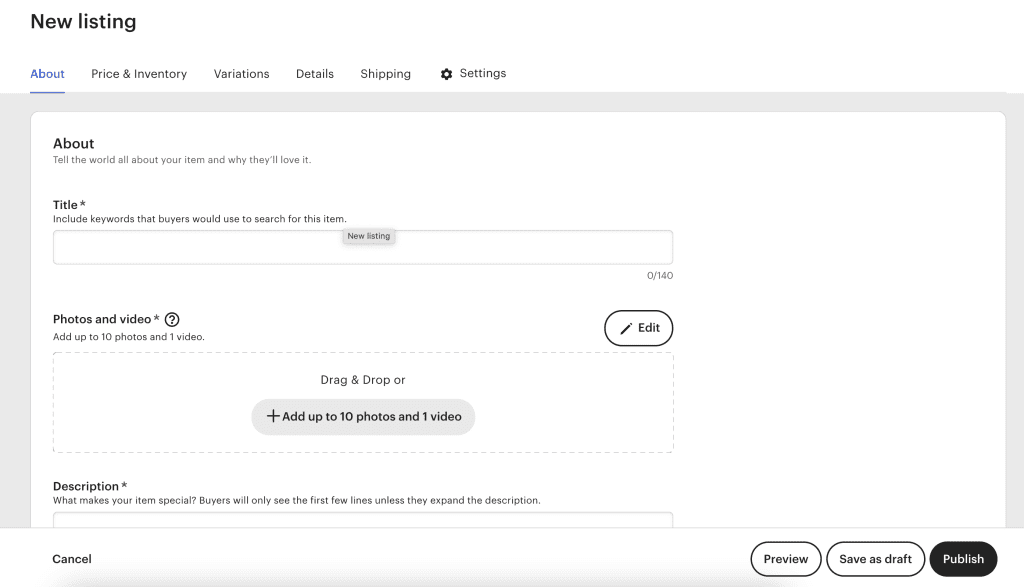
This strategic approach ensures that you are not randomly choosing words but rather strategically placing markers that guide customers directly to your products.
2. Product Descriptions
This is the space where Etsy sellers narrate the story of their products. You can provide detailed and descriptive information, emphasizing the distinctive features of your clothing. In addition, you can include relevant details such as material, size, and care instructions. Well-crafted descriptions not only educate customers but also contribute to improved SEO.
3. Keywords and Attributes
Keywords serve as the secret ingredient for Etsy SEO. You need to incorporate relevant and specific keywords in your titles, descriptions, and tags to enhance visibility in search results.
Additionally, attributes like colour and size play a role in how Etsy’s search algorithm ranks your products.
4. Variants
When selling clothing on Etsy, presenting options such as different sizes or colours can attract customers. However, not every conceivable option needs to be listed, as an abundance of choices might overwhelm shoppers.
You need to find the right balance. Then, offer enough variety to be enticing, yet keep it simple to prevent decision fatigue. For a more in-depth exploration of striking this balance, refer to this informative article on product variants. The goal is to make choices a source of delight rather than a dilemma.
5. Product Photos
On Etsy, the impact of photos can be decisive in a shopper’s choice. There are a couple of approaches for capturing high-quality images that showcase your products effectively, especially with the POD model.
For authenticity and if you have photography skills, consider ordering samples of your products. This allows you to capture your own photos, presenting your items in real-life settings.
Otherwise, you can use tools like Printify’s Mockup Generator or Placeit. These tools make it easy to create professional and visually appealing product images that closely resemble the real items.
6. Shipping Details
Maintain transparency and precision regarding your shipping policies. You can keep your customers informed by providing information on shipping rates, methods, delivery times, and any special packaging considerations. This ensures clear expectations for your customers and can significantly influence their purchasing decisions.
Additionally, free shipping will increase the likeability of your potential customers to buy from you.
7. Policies
Clearly outline your shop policies related to returns, exchanges, and contact information. Well-defined policies foster trust and confidence among your customers, increasing the likelihood of them choosing to shop with you.
Market Your Etsy Clothing Store – Sell Clothes on Etsy
A successful product requires a receptive audience. In addition, effective marketing strategies should be a priority in your business plan. Let’s explore various methods that can enhance your online selling success.
Etsy Onsite and Offsite Ads
Etsy provides powerful tools to elevate your visibility both onsite and offsite. Utilizing Etsy ads allows your products to stand out through promoted listings, which are perfect for capturing the attention of users already exploring the platform. Etsy onsite ads strategically position your products in prominent locations, such as at the top of search results or within relevant category pages.
Besides, Off-site ads expand your reach beyond Etsy, showcasing your items on platforms like Google and Facebook. This approach is like casting a wider net to reach more potential customers wherever they may be. The noteworthy aspect is that you don’t need to manage these ads yourself – the Etsy team takes care of it.
Social Media Marketing
Social media serves as your runway to the world. Platforms like Instagram, Pinterest, and TikTok provide an ideal stage for showcasing your product listings in all their glory. Create compelling content, share behind-the-scenes glimpses, and engage with your audience.
Besides, you can utilize tailored hashtags, regular posting, and interact with your followers to cultivate a community around your brand. It’s not just about selling – it’s about crafting a narrative that people are eager to be a part of.
Email Marketing
Consider Etsy email marketing as your direct connection to your customers. It’s personal, efficient, and an excellent method to keep your audience engaged. You can share updates on new collections, special offers, and compelling content related to your Etsy clothing line.
In addition, always strive to deliver value, whether through exclusive subscriber discounts or insightful fashion tips, making your emails something your customers eagerly anticipate.
Influencer Marketing
Influencer marketing is like having a trusted friend who sings your praises to everyone. Collaborating with influencers whose values and aesthetics align with your brand can introduce your Etsy clothing to a broad yet targeted audience.
You can utilize platforms like Upfluence and Klear to discover influencers – be it a fashion blogger, a sustainability advocate, or a vintage enthusiast. Engage influencers and micro-influencers who resonate with your brand.
How to Sell Clothing on Etsy With No Inventory
Starting your Print-on-demand business on Etsy is important with a reliable supplier. Printify is one of the widely used POD suppliers that connect you with different suppliers worldwide. Printify has different measures to ensure the quality of its suppliers. This is important as you don’t see or touch the product yourself. Having a reliable supplier is important to ensure your customer satisfaction.
To start your Printify Etsy store:
Step 1: Sign Up for Printify:
Create a free Printify account. This simple process unlocks access to our extensive catalogue of high-quality products and the tools necessary for customization.
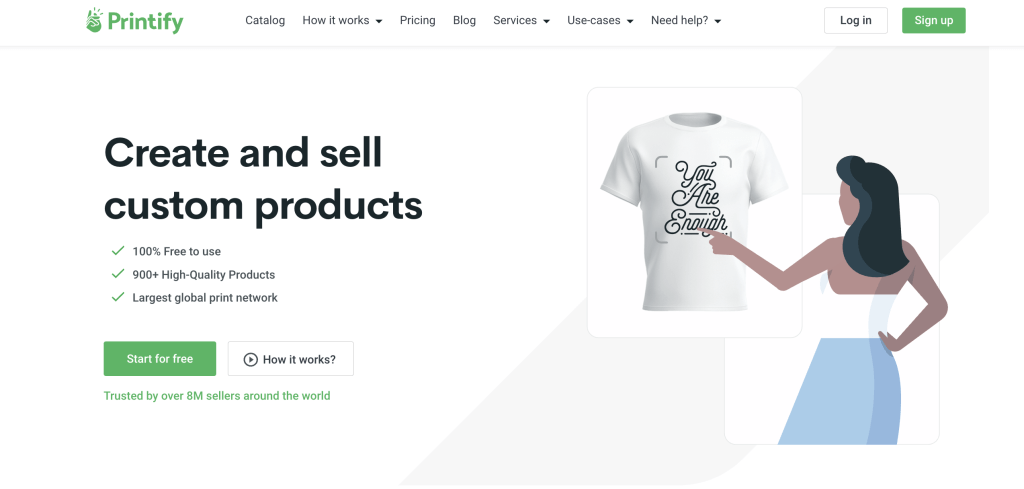
There is a premium plan for Prinitify but you don’t need it at the moment. You will still have access to the same amount of products. Just that you will get an additional 20% discount with the subscription. You can subscribe to it later when your business grows.
Create Your Free Printify Account Now
Step 2: Connect Your Store:
Once your Printify account is established, then seamlessly integrate it with your Etsy store. This ensures the smooth synchronization of product listings, orders, and shipping details.
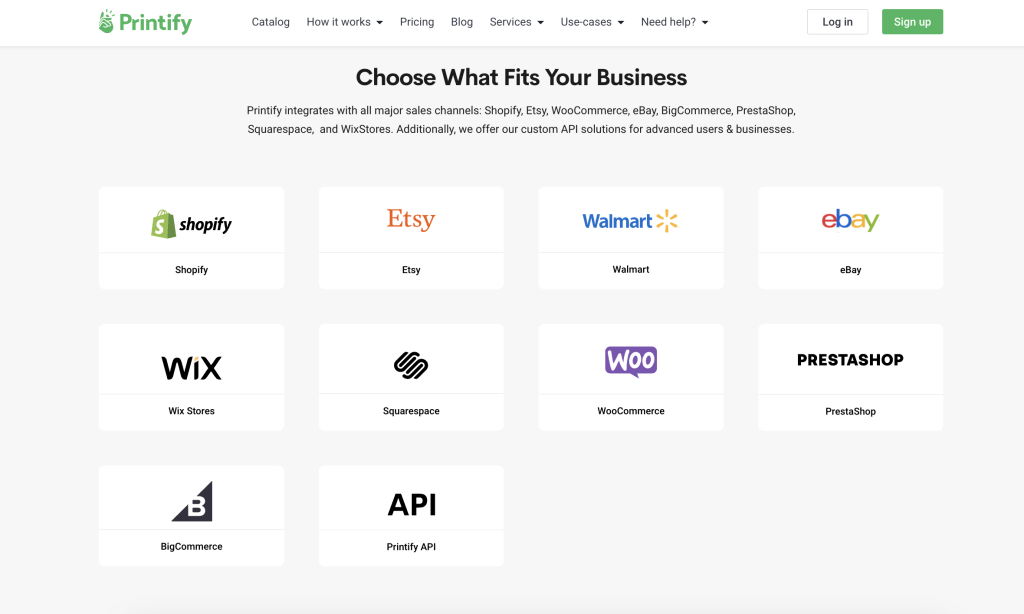
Step 3: Design Your Products:
You need to get your design ready before this. You can create your design on Canva or hire a designer to do it. Once ready, you can then upload it to Printify.
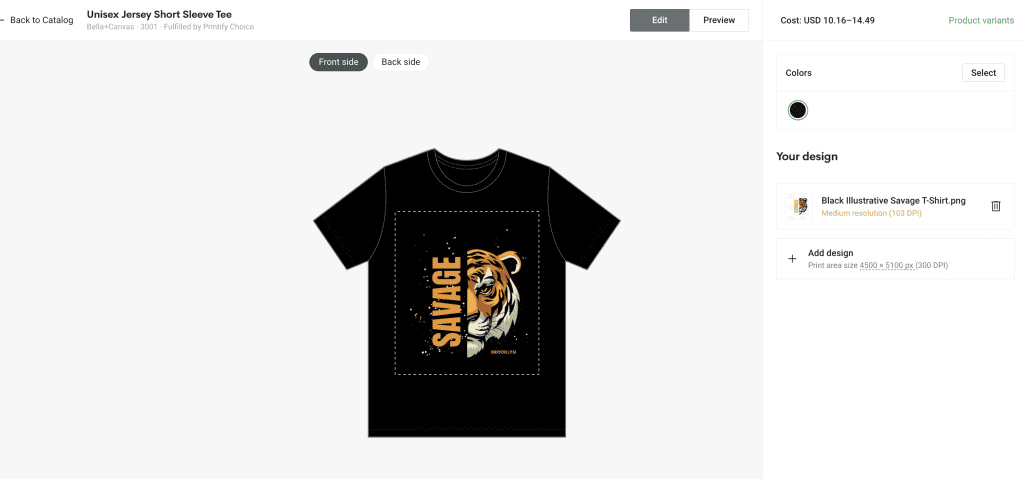
Then, unleash your creativity using the user-friendly Mockup Generator. Whether uploading pre-designed concepts or crafting new ones from scratch, the AI Image Generator, Text Editor, and Graphics Library are readily available at your fingertips.
Step 4: Publish and Commence Selling:
Publish your listings on Printify. It will be published on Etsy together too. The product listing shall be accompanied by captivating product descriptions, eye-catching photos or mockups, and competitive pricing.
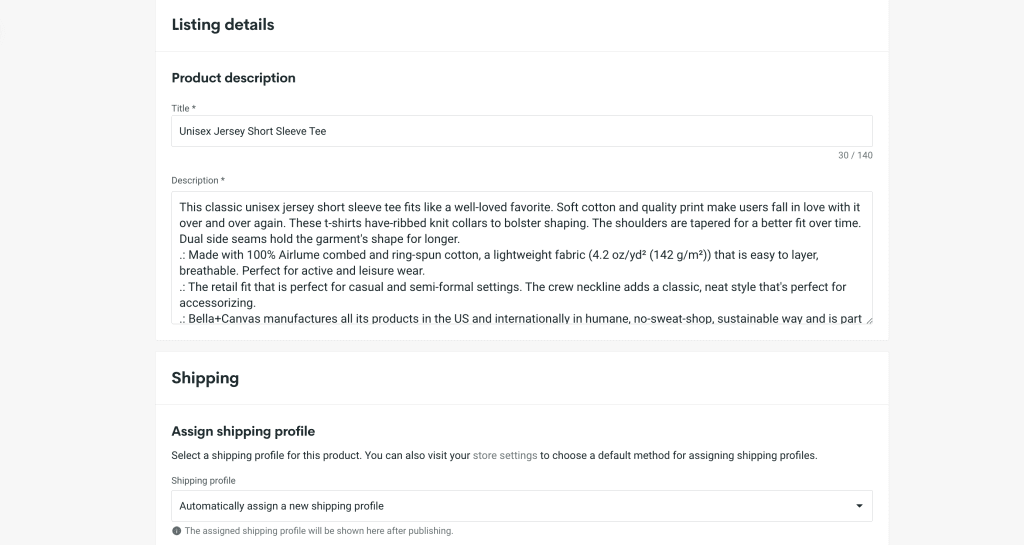
When a sale is made, Printify handles the production and shipping directly to your customers. This streamlined process allows you to sell on Etsy effortlessly, granting you more time to concentrate on growing your brand and reaching new potential customers.
Final Thoughts
In the dynamic world of Etsy, selling clothes is not just a transaction but a creative journey that allows you to showcase your unique style to a global audience. As we wrap up, remember that success lies not only in the quality of your garments but in the passion and dedication you infuse into your brand.
With the right tools, strategies, and a touch of creativity, Etsy becomes your canvas to craft not just garments, but a narrative that resonates with shoppers around the world. So, embrace the process, let your creativity shine, and enjoy the fulfilling experience of building your clothing empire on Etsy. Happy selling!




